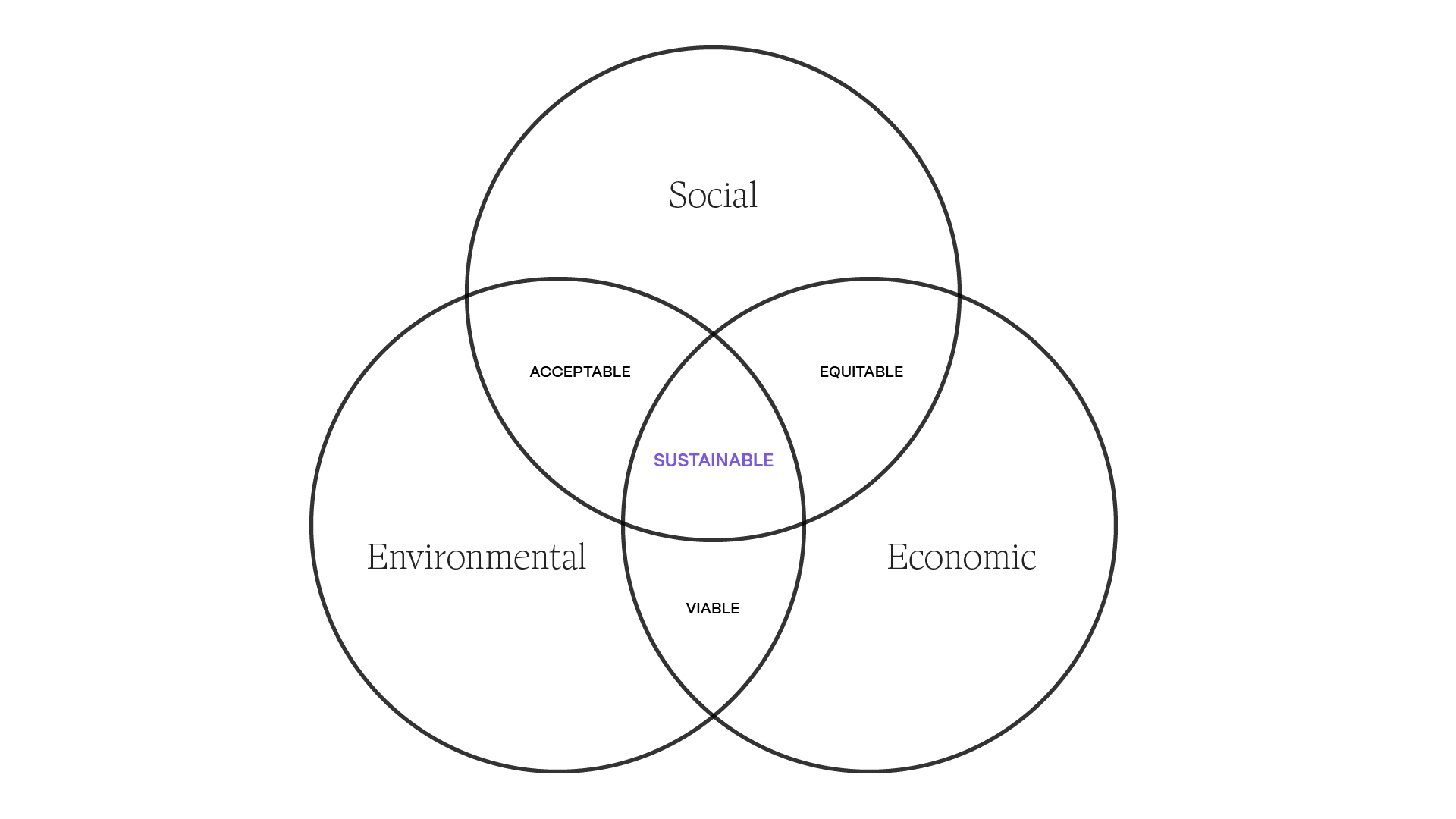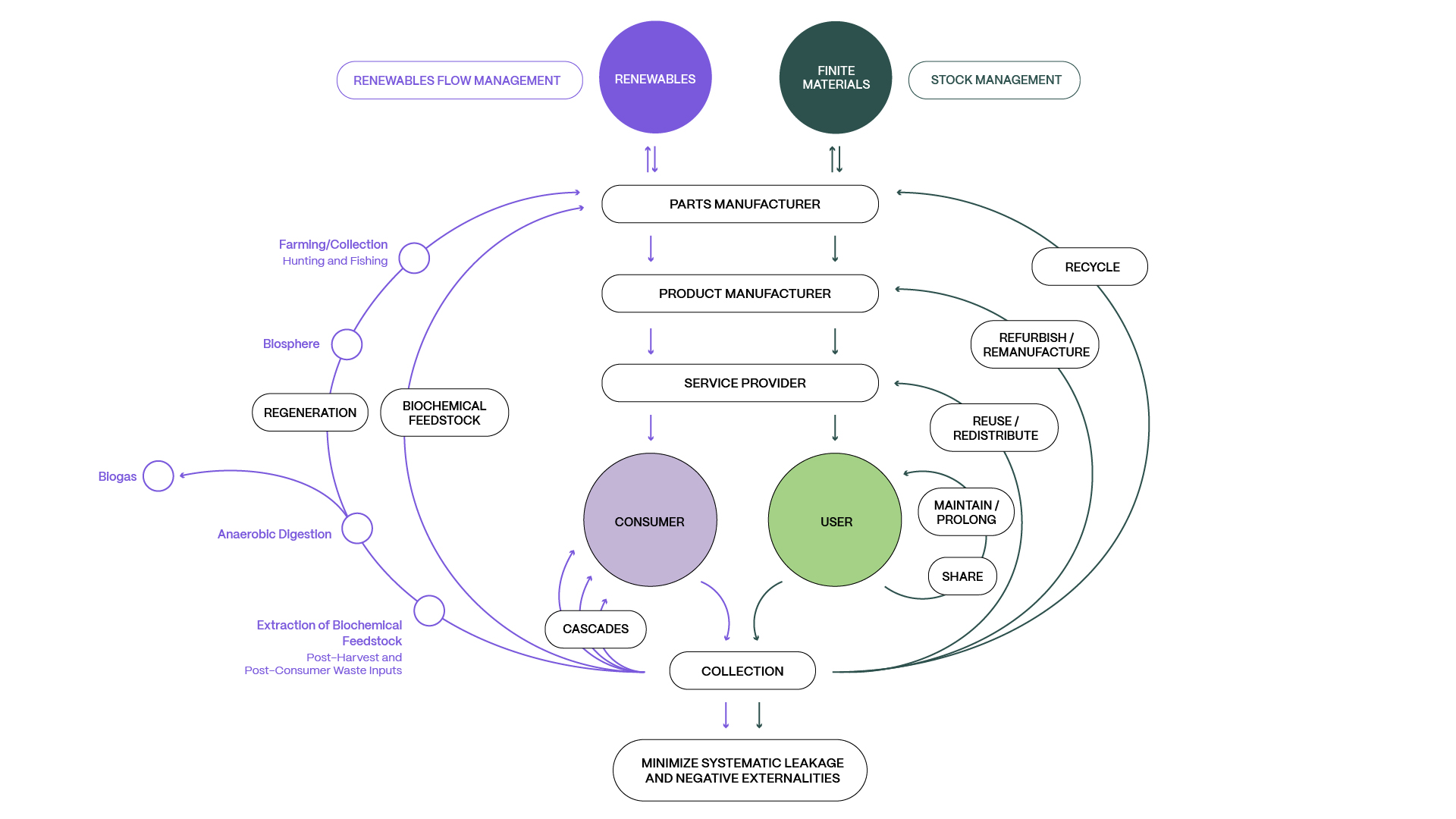
Sustainability vs. Circularity: What’s the Difference?
Whenever environmental concerns are at the forefront of discussions, especially in today’s world where purpose-driven initiatives center on our environmental impact, terms like “sustainability” and “circularity” are often used interchangeably. That said, while they are symbiotic with one another, they are not the same. Understanding the difference is crucial in order to implement effective strategies toward a greener future, so let’s dive into what this looks like.
Sustainability: Designed to Reduce Harm and Extraction
The United Nations Brundtland Commission defines sustainability as “meeting the needs of the present without compromising the ability of future generations to meet their own needs.” Sustainability encompasses three core pillars–environmental, social, and economic–and focuses on integrated systems and approaches that mindfully take as little resources as possible, discourage harmful extraction from our planet and our people, and strive to reduce the negative impacts of consumption. This includes things like minimizing carbon footprints through the lifecycle of products, using resources more efficiently, ensuring fair labor practices, and reducing waste wherever possible.

Barbier, 1987
An example of sustainability in the fashion industry is producing an organic cotton t-shirt that uses less water when manufactured and was made using fair labor practices. For a consumer, they may think that’s the extent of sustainability when it comes to a piece of clothing (and that’s what fast fashion marketing pushes them to believe); however, without a program or intentional practice of managing its end-of-life, it’s disposed of when the consumer is finished using it, contributing to textile waste. That next-life perspective is what drives the concept of circularity.
Circularity: Designed for Regeneration
Circularity is a subset of sustainability – it takes sustainable practices a step further by rethinking the entire lifecycle of a product, requiring a redesigned economic model. The circular economy, as defined by the Ellen MacArthur Foundation, is “a system where materials never become waste and nature is regenerated.” Circularity is based on three principles: eliminate waste and pollution, circulate products and materials at their highest value, and regenerate nature. This model is designed to minimize waste and make the most of resources by keeping materials and products in use for as long as possible through recycling, reuse, and regeneration. It’s often seen as an approach that aims to emulate natural systems, where there is no waste, but instead, everything is a resource for something else. In a circular model, the end of a product’s life is designed to be the beginning of a new cycle, which is a major contrast to the traditional linear model.

Ellen MacArthur Foundation, 2019
An example of circularity in the fashion industry is producing a t-shirt made from recycled cotton, having systems in place to collect the t-shirt from the end consumer once they’re finished with it, and recycling them into new shirts which reduces the need for virgin materials and minimizes waste. The idea of using recycled materials to produce new t-shirts, in addition to other initiatives like using natural dyes, is what can make these shirts both circular and sustainable. When a circular system operates sustainably, every item produced has a significantly lower impact compared to a traditional linear model, elevating a brand’s sustainability efforts and offering the opportunity to recapture value through next-life logistics.
The Key Differences Between Sustainability and Circularity
SCOPE
- Sustainability is a broader concept that encompasses environmental, social, and economic facets.
- Circularity is a specific approach to resource management within the broader context of sustainability.
Focus
- Sustainability focuses on meeting the needs of the present and future generations across multiple categories.
- Circularity focuses on optimizing resources and minimizing waste by closing the loop on material flows.
Approach
- Sustainability addresses a wide range of issues, from climate change to social equity and economic development.
- Circularity specifically targets resource management, emphasizing reducing, reusing, recycling, and regenerating materials.
